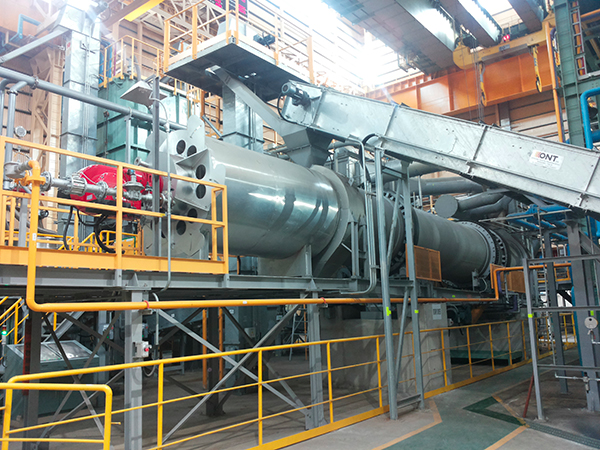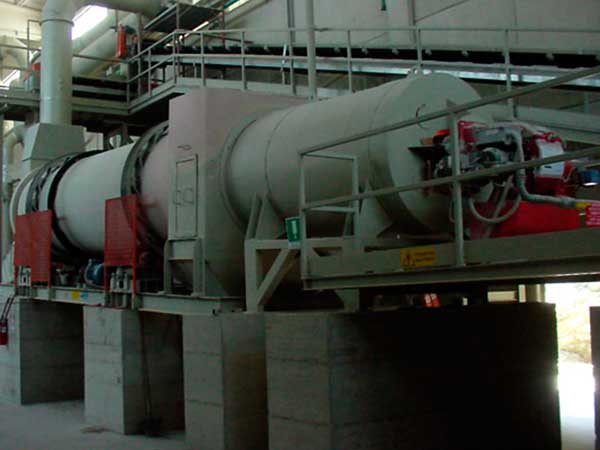



Drying of minerals in general, sand, clays, kaolin, limestone, metal shavings, fertilizers, various chemical products, bentonite, gypsum, sewage sludges, bones, leather manufacturing wastes.
The rotary dryer may be designed in various arrangements, according to the features of the material to be treated.
First of all the drying process may be carried out in counterflow or parallel flow.
In the first case, the hot gases meet the material near the discharge outlet of the dryer.
This solution enables to achieve high drying degrees and is adequate when the material may with-stand high temperatures without any alteration.
The drying in parallel flow is instead preferable for heat-sensitive materials or for materials that are initially very wet and so have the tendency to stick to the walls.
GYPSUM KILN
A typical application of this solution is the rotary kiln for the baking of gypsum.
This kind of gypsum kilns have the advantage, compared to the static bowl kilns, of requiring less maintenance and giving the possibility, for the largest units, of operating with continuous process.
Our technical office will design and suggest time by time the required accessories, as dedusting, charging and discharging equipment, thermal insulation etc.
The dimension of these dryers are studied each time according to the specific problem.
As general information, our field of construction is the following:
- Outside diameter from 600mm to 2250 mm
- Length from 5. to 14m
- Thermal power of the combustion unit from 100.000 Cal/h to 4.000.000 Cal/h
| TYPE | I | II | II bis | III | |
| Maximum power of the combustion unit | Cal/h | 750.000 | 1.500.000 | 2.000.000 | 3.000.000 |
| Outside diameter | mm | 1400 | 1800 | 2100 | 2250 |
| Length | mm | 4500 | 6000 | 6000 | 7000 |
| Drive | kW | 5 | 15 | 22,5 | 22,5 |
Data and features may change without any previous advice.

